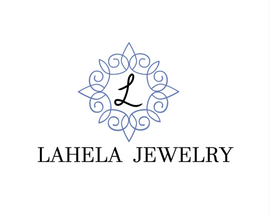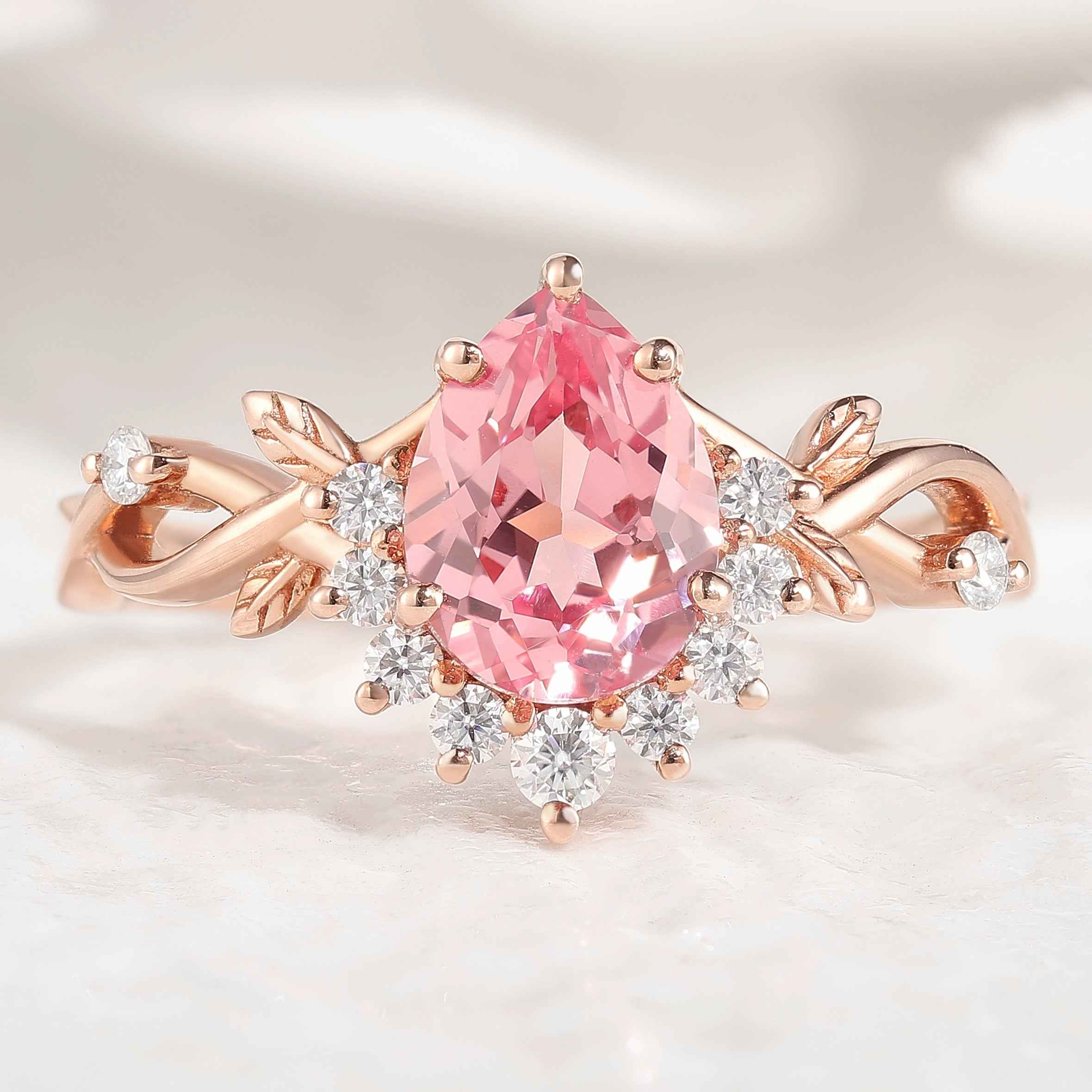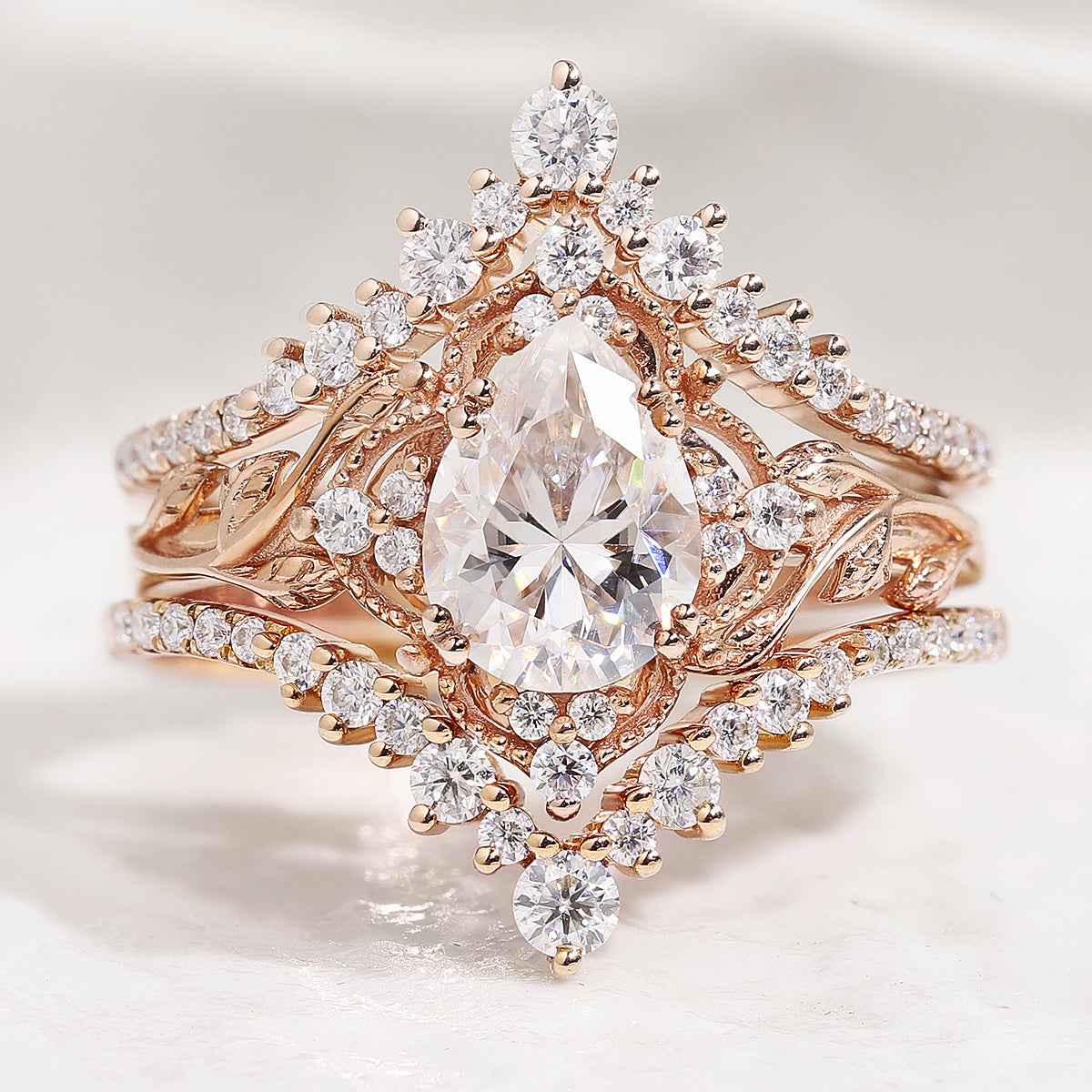Key Takeaway
In the sapphire vs. diamond argument, the decision is based on individual priorities. A diamond offers traditional, blazing brilliance and unparalleled hardness. A sapphire comes in a very durable package with brilliant color, uniqueness, and exceptional value. The ideal gemstone selection is one that you would like to gaze at daily—a genuine representation of your dedication.
An engagement ring is a reflection of your personal story. The big question is: what stone tells it best? Do you picture the classic, fiery sparkle of a diamond, or the rich, royal color of a sapphire? Each stone has a distinct beauty and character. We're comparing them on the things that matter—how they wear, what they cost, and the style they bring to your hand. This will help you find the gem that feels like you.
The Diamond Engagement Ring: A Classic Symbol of Forever
A diamond ring is the classic choice for a proposal, and for good reason. It's a powerful symbol of commitment, and its physical strength makes it a popular pick for an engagement ring you'll wear every day.

Unmatched Hardness and Durability for a Lifetime
Diamonds are famous for being tough. On a scale of mineral hardness called the Mohs scale, they score a perfect 10. This makes a diamond the hardest natural material on Earth.
For you, this means your ring can handle real life. It strongly resists scratches and chips from daily activities, so you don't have to be overly careful with it. This incredible resilience is why diamond rings last long enough to become family heirlooms, offering true peace of mind.
Unmatched Fire and Brilliance of a Diamond
The magic of a diamond is how it plays with light. A well-cut stone gathers any light around it and reflects it back in a brilliant flash. This dazzling light show is made of three distinct visual effects:
- Brilliance: The bright, white light that reflects back to your eye.
- Fire: The beautiful flashes of rainbow color seen as the stone moves.
- Scintillation: The pattern of light and dark spots that dance across the surface.
No other stone can quite replicate the striking sparkle created by this special combination. The cut of a diamond is sometimes more crucial than its size in achieving this lovely light performance.
The 4 Cs: A Standard for Diamond Quality
A diamond's quality and price are graded using a standard system: the 4 Cs. Knowing them can help you find the best diamond for your budget.
- Cut: This grade refers to how well the diamond's facets are angled to reflect light, not its shape (like round or oval). A better cut creates more sparkle.
- Color: For white diamonds, having no color is ideal. The industry scale runs from D (completely colorless) to Z (a noticeable yellow or brown tint).
- Clarity: This measures the amount of tiny natural imperfections, either inside the stone or on its surface. A "flawless" diamond is extremely rare and valuable.
- Carat: This is simply the diamond's weight, which directly relates to its physical size.
The Sapphire Engagement Ring: A Choice with Color and Personality
An exquisite approach to display your individual flair is with a sapphire engagement ring. It's a remarkable option with a rich history and unique personality that goes beyond simply being just a diamond alternative.

A Rainbow of Sapphire Hues
Most people think of a deep, royal blue when they picture a sapphire, but they actually come in almost every color imaginable. You can find them in shades of pink, yellow, green, and even rare, sunset-toned "Padparadscha" sapphires. This wide range gives you the freedom to pick a color that truly fits you. White sapphires are also an option if you like the colorless look but want something different from the traditional choice. Of course, a stone's color is just one of many factors in choosing your ideal sapphire ring.
Built to Last
A sapphire is strong enough for daily life. It scores a 9 on the Mohs scale of hardness, just behind a diamond and moissanite. This toughness means it holds up incredibly well to the bumps and scrapes of everyday wear. While not quite as scratch-proof as a diamond, a sapphire is still an excellent and durable choice for a ring you'll wear for a lifetime. Its reliability is why royalty has trusted it for centuries.
A Unique Look with Royal Elegance
A sapphire's vivid hue is instantly noticeable. It produces a unique appearance that feels both contemporary and timeless. Sapphires, which stand for loyalty and wisdom, have long been associated with royalty. The most well-known example is the blue sapphire ring worn by Princess Diana and now by Catherine, the Princess of Wales. This connection gives the stone a sophisticated feel, which makes it the ideal unconventional option.
Comparing Sapphires and Diamonds Head-to-Head
By examining the main differences between these two stones, you may determine which one best suits your tastes, lifestyle, and financial situation. Here is a brief overview of the main differences between sapphire and diamond:
| Feature | Diamond | Sapphire |
| Hardness (Mohs) | 10 (The hardest) | 9 (Extremely durable) |
| Brilliance | Intense, fiery sparkle | Deep, velvety glow |
| Color Options | Mostly colorless; colored diamonds are very expensive | Full spectrum of colors |
| Price (per carat) | Generally higher | Generally lower for comparable sizes |
| Style Vibe | Classic, Traditional | Unique, Regal |
Looks: Fiery Sparkle vs. Rich Color
The way each stone responds to light is the most obvious visual distinction. A diamond is cut to create a brilliant, fiery sparkle, breaking light into a flashing rainbow. The rich, deep hue of sapphires is what makes them so beautiful. Instead of a strong fire, it glows softer and more velvety. The primary appeal of a well-cut sapphire is its pure hue, yet it does dazzle. The decision is up to you: do you like a deep, eye-catching hue or a dazzling, colorless flash?
Practical Durability for Everyday Life
How does a 9 on the hardness scale compare to a 10 for everyday wear? A diamond's perfect 10 rating means that only another diamond can scratch it. A sapphire's 9 rating makes it safe from scratches from almost anything it will encounter. It is a very durable gem, tough enough for a lifetime. Both stones are very strong choices for a forever ring.
Cost and Value
In a price comparison, sapphires generally offer a better value for their size. A one-carat sapphire is typically much less expensive than a one-carat diamond of good quality. This difference allows you to get a larger, more noticeable stone for your budget. While colored diamonds are extremely rare and costly, a beautiful, vibrant color is the standard for sapphires, not the expensive exception.
Lab-Grown Gems: The Modern, Ethical Choice
Where your gemstone comes from matters. Both diamonds and sapphires can be grown in a lab, offering a responsible alternative to traditional mining. Lab-grown stones are not fake. They are physically and visually identical to their mined counterparts—they are real diamonds and real sapphires. The only difference is their origin.

For many, choosing a lab-grown stone provides peace of mind and better value. The advantages include:
- A Clear Conscience: Lab stones are guaranteed to be conflict-free, with a transparent and ethical supply chain.
- Smaller Environmental Impact: Creating a gem in a lab requires far less disruption to the natural environment than mining.
- More Affordable: Lab-grown gems typically cost less than mined stones of the same size and quality, allowing your budget to go further.
How to Make Your Final Engagement Ring Gemstone Choice
It is up to the individual to decide between a sapphire and a diamond. Just choose the option that works best for you and your spouse; there is no right or wrong answer. A sapphire makes a statement with its rich, distinctive hue, while a diamond delivers that timeless, fiery sparkle. To identify the greatest fit, consider your top priorities.
- Your Personal Style: Do you like a classic, classic style or something unique? The classic option for dazzling glitter is a diamond. With rich hue and royal history, sapphires are ideal for expressing individuality. A royal blue sapphire ring, for example, offers a look that is both timeless and deeply personal.
- Your Lifestyle: Both stones are durable enough to be worn on a regular basis. The unparalleled toughness of a diamond offers the utmost security whether you lead an extremely active lifestyle or are harsh on your hands. For most people, a sapphire is still a very durable option.
- Your Budget: If you want a larger stone for your money, a sapphire may be an excellent value. You can often get a bigger, more colorful gem compared to a diamond at the same price point.
FAQs About Sapphire and Diamond Engagement Rings
Q1: Is a sapphire engagement ring durable enough?
Yes. Sapphires are incredibly resilient and long-lasting, scoring a 9 on the Mohs hardness scale. For a commitment ring that will be worn every day for many years, they make a great gemstone option.
Q2. Are sapphires as dazzling as diamonds?
Sapphires do not have the same kind of fiery, rainbow sparkle as diamonds. Rather, the deep color of a well-cut sapphire gives it a rich, velvety warmth and a lovely sparkle.This unique beauty is a major reason for the enduring popularity of sapphire engagement rings.
Q3: Is a white sapphire a suitable substitute for diamonds?
A white sapphire is a popular diamond alternative. At a lower cost, it offers a colorless appearance. In contrast to the blazing brightness of a diamond, it has a brilliant, silvery-white shimmer.
Q4: How should a sapphire ring be maintained in comparison to a diamond ring?
Both stones are simple to maintain and can be cleaned at home using a gentle brush and warm, soapy water. Because a diamond is harder, it is more resistant to scratches from other materials and requires slightly less caution in daily wear.


